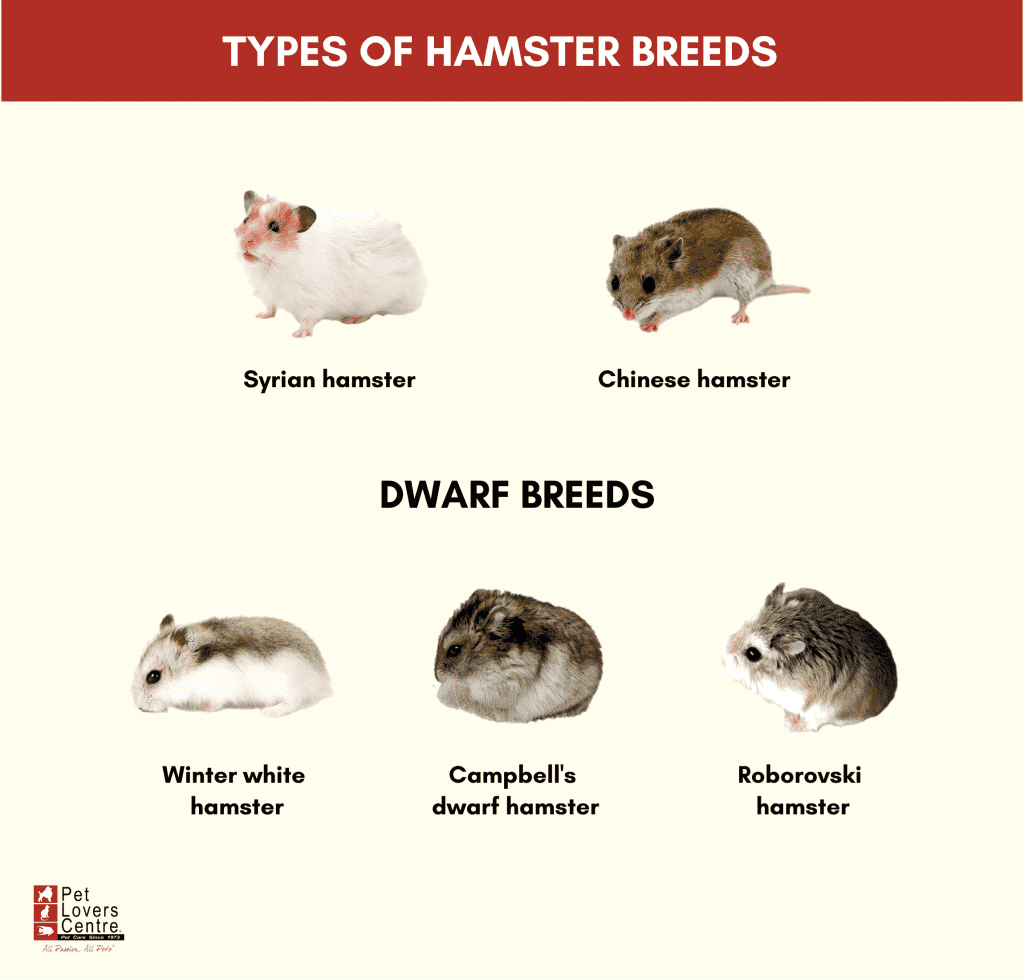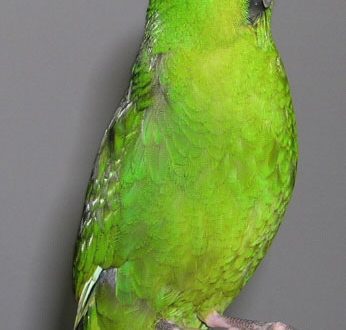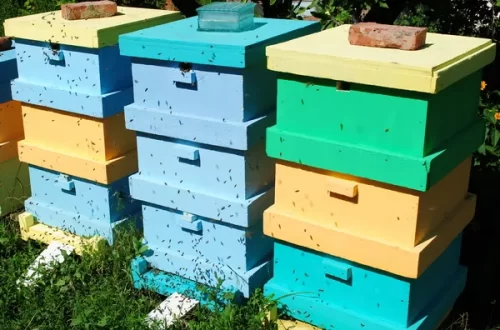
Уобичајене расе хрчака: изглед и неке карактеристике
Hamsters are found all over the world. They are common in America, Europe, some regions of Africa and Asia. Rodents prefer forest-steppe and steppe. They can also be found in deserts and mountains, the height of which is 2,5 thousand meters above sea level.
Садржај
Hamster breeds
Today there are more than 60 genera of hamsters, which include approximately 240 species.
Ordinary hamster
The height of this animal is 25-30 cm. It has a bright color. So, the upper part of the body is red, the lower part is black, and 3 white spots are noticeable on the sides and chest. The paws of the hamster are white. In nature, almost completely black individuals can be found.
This breed of hamster lives in the southern part of Europe, as well as in northern Kazakhstan and Western Siberia.
The animal loves solidity in everything. So, he creates complex burrows with several pantries. The distance between the main passage and nesting chambers can reach 2,5 m. By the beginning of autumn, all the bins are filled with grain, corn, carrots, potatoes and other products. The total mass of stocks can be 15-20 kg. In the summer, the animals feed on grass, seeds, and roots. Insects and even small animals, including mice, can be found in the diet.
If a wolf or any other enemy blocks the way to the hole, the hamster can pounce on it and bite hard.
There are 10 cubs in one brood. Sometimes this number reaches 15-20 copies.
An ordinary hamster is considered a pest, and its skin is used as cheap furs.
Such an animal lives in Primorye, as well as some parts of Korea and China. The length of his body reaches 20-25 cm. Wool has gray-brown tint, which brightens downwards. You can distinguish this breed of hamsters from other rodents by their pubescent tail, as well as large ears and white paws.
Huge stocks of seeds are presented in the storerooms of the animal. It is worth noting that Chinese peasants often specifically look for these pantries in order to replenish their stocks.
The female feeds 2-3 broods per season. The number of cubs in each of them is from 10 to 20 individuals.
сиви хрчак
This animal lives in the European part of Russia, as well as in the Caucasus and in the southern regions of Western Siberia. As a rule, you can meet the breed in cereal and mountain steppes, as well as in agricultural land.
This small animal has a body length of 10-13 cm. It has small ears, a sharp muzzle, and short fur. The coat has a smoky gray or reddish-sandy tint.
The diet of the gray hamster is based on wild and cultivated plants. In addition, animals feed on terrestrial molluscs, locusts, insect larvae and ants. Reproduction begins in April and lasts until October. In one season, the female feeds about 3 broods, consisting of 5-10 cubs.
Eversmann’s hamster
Such a hamster is found not far from the middle Volga and the northern part of the Aral Sea, where it can be found on salt licks, cereal fields and agricultural land.
Description of the animal:
- small tail;
- short paws;
- мале уши;
- noticeable digital tubercles;
- compacted wide tail;
- coat color varies from ash-sand to black and white;
- the fur is short and velvety to the touch.
The rodent mainly feeds on shoots, seeds, and insects. The holes of Eversmann’s hamster are very simple. In fact, this is the main entrance and several identical nest chambers. There are 4-5 cubs in each litter.
Ђунгарски хрчак
This is the most studied animal. Under natural conditions, it is found in Western Siberia, central Asia and Kazakhstan. It can be found in cereal steppes and cultivated lands. Adults reach about 10 cm in length.
Изглед:
- шиљаста њушка;
- мале уши;
- thick wool on the soles of the paws;
- ocher or brown-gray back;
- light belly;
- a narrow black stripe on the ridge;
- white paws.
The color of the Djungarian hamster may vary depending on the season. So, in summer the rodent has a gray tint, and in winter it is almost white with a silvery sheen.
The diet is based on seeds, insects and plant shoots. The female feeds offspring 3-4 times per season, bringing 6-12 cubs. They grow very quickly and are able to breed as early as 4 months.
Djungarian hamsters often act as pets. They are готово да нема мириса subject to weekly cleaning of the cage and the use of a layer of sawdust 3 cm high. Such hamsters do not bite. They are very active and energetic. For breeding, rodents are kept in pairs. Life expectancy is approximately 3 years.
Роборовски хрчак
Such an animal lives in sandy deserts. It feeds on seeds of tulips, beets, and also cereals. Insects are rare in the diet.
This breed of hamster прњаста њушка, large rounded ears, pubescent soles of the legs, pinkish-yellow back, white peritoneum.
Hamsters are most active after dark. They dig shallow burrows from a couple of passages and a nesting chamber. There are about 5-9 cubs in each litter.
The Roborovsky hamster is often grown at home. To do this, it is enough to prepare a metal cage and a layer of sand of 2-3 cm. You also need to put a few stones, moss, small twigs, a box for the offspring and rest of the animals.
Suitable for feeding at home seeds of various plants. You can also give dandelion leaves, bread soaked in milk, mealworms and oatmeal. Before breeding, you need to add a lot of protein to the diet.
златни хрчак
This is a small animal resembling an ordinary hamster. The main difference is a meek disposition and harmlessness. Rodents can breed as early as 1,5 months. Due to this rate, they are often used for laboratory research.
The animal is very mobile and active. He stuffs his cheeks with food in a funny way and does not bite if you pick him up. You can let such a hamster walk around the apartment only when he gets used to the owners.
One pair will require cage with dimensions 40x30x30 cm. There you need to put a small wooden house and lay straw or hay.
Golden hamsters need a varied diet. Most often, a mixture of oats, flax, corn and millet is used. Also in the diet should be represented by fresh vegetation, namely carrots, tradescantia and lettuce. Milk and a small amount of pure water are used for drinking.
Hamsters breed at temperatures around 22-24º C. They bring young of the annual. These rodents cannot be called caring parents. Fortunately, the cubs themselves are very resilient. They develop rapidly and already on the 10th day are able to eat the same food as adults. Babies should not be picked up, otherwise the female will destroy the brood.
Taylor’s dwarf hamster
These are the smallest rodents living in the New World. Their length is no more than 5-8 cm, and weight – 7-8 g. Such hamsters can be found in Arizona, Southern Mexico, and also Central America. Rodents live in clearings in tall dense grass. They arrange their nests under a bush or near stones.
The basis of the diet are seeds, grass and some insects. Rodent breeding is observed throughout the year. Pregnancy lasts 20 days, after which 3-5 cubs are born. Sometimes there are about 10 or more broods per year. The males stay with the females and care for the young.
Dwarf hamsters can be raised at home. They do not bite and quickly get used to the owner.
Друге расе
- Ciscaucasian hamster lives in the Ciscaucasia, as well as in the North Caucasus. It can be found in foothills and alpine meadows. The length of the body is about 20-25 cm, and the tail is 1 cm. The coat has a reddish tint, while there are two small black stripes on the sides.
- The Transcaucasian hamster lives in the foothills of Dagestan. It settles on gentle hills and in fields. It has a black chest, gray belly, white paws and nose.
- Dahurian hamster found in Russia. It has red or brownish fur. Starting from the forehead, a black stripe stretches along the entire back. The rodent can be found on the edges, near bushes, on the outskirts of fields and in sandy steppes. The basis of the diet are seeds and insects. In winter, the animal sleeps for several days.
- The Trans-Baikal hamster is found in overgrown river valleys. He can also live in houses. The length of its body is about 10 cm, and the tail is 2 cm.
- The long-tailed hamster lives in Transbaikalia, as well as in the mountain steppes of the Sayan Mountains. The length of this dark gray or reddish animal is about 10 cm. The upper part of the tail has a dark shade, and the lower part is light. The rodent feeds on wild almonds, cereals and some insects.
- white-legged hamster outwardly resembles a field or forest mouse. The body length of the rodent is 9-16 cm. Adults weigh 20-60 g. Such animals can eat nuts and berries, tree seeds, and mushrooms. Hamsters live in permanent pairs, that is, after the appearance of cubs, the male does not leave his female. In nature, rodents live up to 2 years. Their life expectancy in an apartment reaches 5-6 years.
- The Mongolian hamster lives in the semi-deserts and sands of Tuva. He has a very light coat, and there are no dark spots on his chest. The rodent eats insects, greens, roots and seeds. In winter, he periodically hibernates.
- Hamster altiplano lives in the plains. It looks like a gerbil. Its fur has a brownish-yellow hue. The basis of the diet are various insects.
Hamsters are the most common rodents to keep as pets. These animals are very cute, unpretentious and friendly. However, before choosing this animal, it is necessary to take into account its breed, because not all hamsters survive in an apartment.





